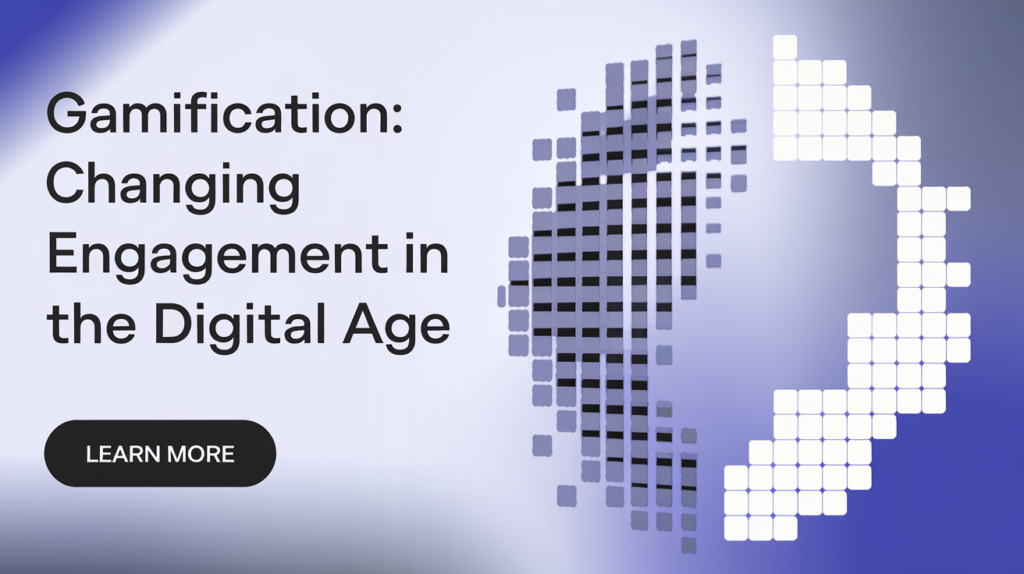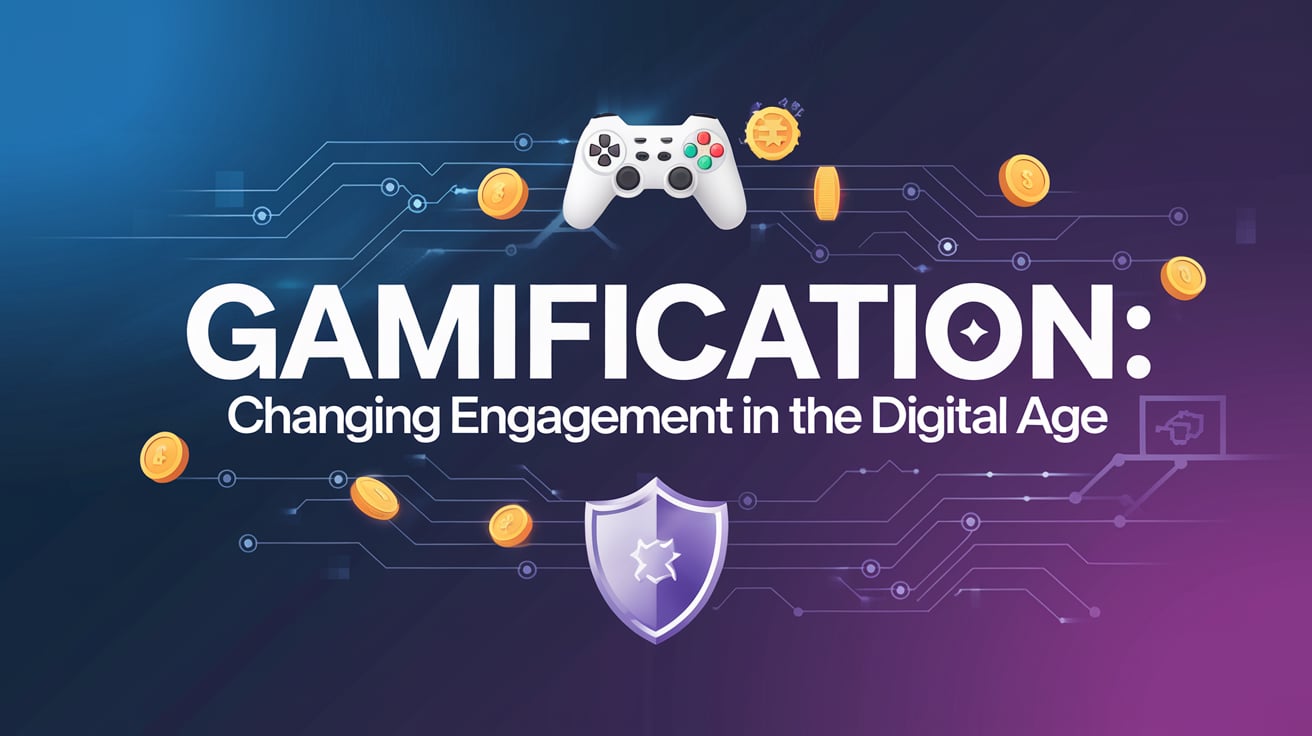Gamification: Changing Engagement in the Digital Age
Using the foundations of game design to maximize engagement, drive, and customer loyalty across several sectors, gamification has become a revolutionary approach. Businesses can develop immersive experiences that enthrall their audience and foster intended behavior by including gamelike elements like points, badges, leaderboards, and challenges into nongame environments. Gamification is changing how businesses engage with their customers from education and healthcare to marketing and staff development. Emphasizing its role as a strong engagement tool in the digital age, this post explores the idea of gamification, its advantages, uses, methods, difficulties, and future possibilities.
Gamification is the use of game mechanics and design strategies in nongame settings to inspire involvement, interaction, and loyalty. By drawing on the natural human need for competition, success, and validation, it makes rather boring activities more fun and fulfilling. Points, which measure progress; badges, which represent accomplishments; leaderboards, which rank participants; and challenges, which offer goals to work for are all standard features of gamification. These components collaborate to produce a feeling of achievement and promote a competitive attitude. Rather than designing complete games, gamification is the incorporation of fun elements into current processes to improve consumer experience and produce specific results.
Gamification: Revolutionizing Engagement in the Digital Epoch
In a world where digital interactions dictate the rhythm of modern existence, engagement has evolved into an elusive yet indispensable asset. Traditional methods of captivating audiences, whether in business, education, or social spheres, are rapidly fading into obsolescence. Enter gamification, a transformative approach that infuses game mechanics into non-gaming contexts, fostering motivation, participation, and unwavering commitment. This phenomenon is not merely a trend; it is an evolutionary leap in human-digital interaction.
Deciphering Gamification: A Digital Paradigm Shift
Gamification is not the mere embellishment of systems with superficial rewards; rather, it is the strategic implementation of game-like elements—points, leaderboards, challenges, and achievements—designed to ignite engagement. By leveraging psychological incentives, gamification taps into intrinsic and extrinsic motivations, compelling individuals to act with vigor and persistence.
Whether in corporate training, e-learning, fitness apps, or customer loyalty programs, gamification reconstructs mundane interactions into immersive experiences. The result? Heightened participation, improved retention, and an innate desire to progress.
The Psychology Behind Gamification: Why It Works
At its core, gamification thrives on behavioral psychology, particularly concepts such as self-determination theory (SDT), operant conditioning, and cognitive reinforcement. Humans are wired to seek accomplishment, recognition, and progression.
- Autonomy – The ability to choose paths and determine outcomes fosters deeper investment.
- Competence – Progression through ranks, unlocking achievements, or overcoming obstacles instills a sense of mastery.
- Relatedness – Competing with peers or collaborating towards shared objectives fuels social connectivity.
These elements, when seamlessly interwoven, create compelling user experiences that keep participants engaged far beyond their initial interactions.
Gamification in Business: Enhancing Customer and Employee Engagement
Customer Loyalty and Brand Affinity
In the realm of commerce, gamification has proven to be a formidable tool in cultivating brand loyalty. Companies like Starbucks and Nike integrate reward-based gamification to encourage repeat business. Points systems, referral bonuses, and tiered memberships craft an ecosystem of incentives that transform passive consumers into active brand evangelists.
Workplace Motivation and Productivity
Employee engagement is another frontier where gamification has left an indelible mark. Platforms such as Microsoft’s Ribbon Hero or Salesforce’s Trailhead leverage competition, progress tracking, and incentives to elevate employee learning and productivity. By gamifying training modules and project milestones, organizations can enhance motivation and foster a culture of continuous improvement.
Gamification in Education: Redefining Learning Experiences
Traditional education often struggles to captivate students, but gamification reshapes the landscape by injecting interactive and reward-driven learning methodologies.
- Adaptive Learning Paths – Personalized progress tracking and reward systems encourage self-paced learning.
- Engagement Through Competition – Leaderboards and point systems transform knowledge acquisition into a dynamic experience.
- Instant Feedback – Immediate reinforcement boosts learning efficacy and retention.
Platforms such as Duolingo and Khan Academy exemplify how gamification fosters a sustained interest in learning by making education more interactive, goal-oriented, and rewarding.

The Digital Fitness Revolution: Gamification in Health & Wellness
Fitness and wellness applications have embraced gamification to revolutionize how individuals engage with their health. Apps like Fitbit, Strava, and MyFitnessPal incorporate competitive challenges, streak tracking, and goal-based incentives to encourage consistent physical activity. Social elements, such as community-driven challenges and virtual rewards, amplify motivation and accountability.
Challenges and Ethical Considerations in Gamification
While gamification offers compelling advantages, it is not devoid of challenges. A poorly implemented system can lead to burnout, disengagement, or manipulative design tactics.
Avoiding Superficial Implementation
Merely slapping badges and leaderboards onto a system without deeper engagement strategies can render gamification ineffective. The mechanics must align with meaningful goals rather than being gimmicky distractions.
Balancing Intrinsic vs. Extrinsic Motivation
Over-reliance on external rewards can diminish long-term engagement. If users participate solely for incentives, their motivation wanes once rewards are removed. The ideal system nurtures intrinsic drive, where users find the experience itself rewarding beyond tangible incentives.
Ethical Concerns: The Fine Line Between Motivation and Manipulation
Certain gamification techniques risk veering into exploitative practices, such as compulsive engagement loops or pay-to-win mechanics. Ethical gamification prioritizes user well-being, fostering positive experiences without undue coercion.
Future Trajectories: The Next Evolution of Gamification
The gamification landscape is poised for exponential evolution, driven by emerging technologies:
- Artificial Intelligence & Personalization – AI-driven gamification tailors experiences based on user behavior and preferences, creating hyper-personalized engagement.
- Augmented & Virtual Reality (AR/VR) – Immersive gamified environments will redefine digital interactions, making engagement more experiential and interactive.
- Blockchain & Decentralized Rewards – The integration of cryptographic incentives and tokenized rewards will further revolutionize how users interact with gamified ecosystems.
Final Thoughts: Gamification as the Catalyst of Digital Engagement
Gamification is more than a fleeting digital trend; it is a fundamental shift in how engagement is fostered in an era dominated by distraction and digital saturation. By harnessing the power of game mechanics, businesses, educators, and health professionals can cultivate motivation, inspire participation, and create enduring engagement.
As we advance into an increasingly digital future, the organizations and individuals who master the art of gamification will not only capture attention but sustain it, forging deeper connections in a world craving meaningful interaction.


Post Comment